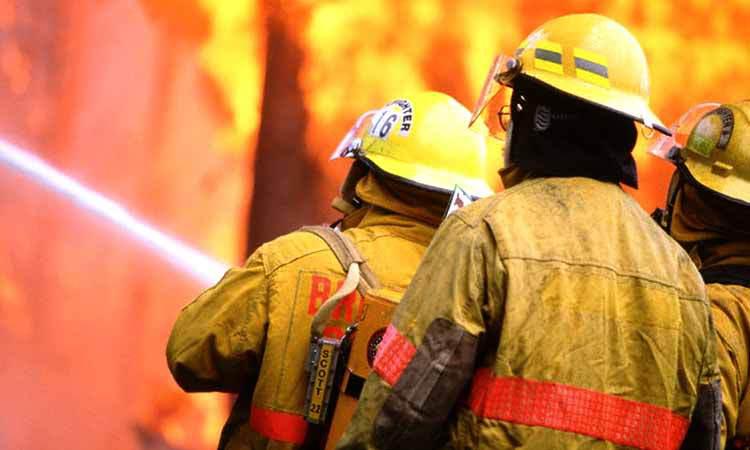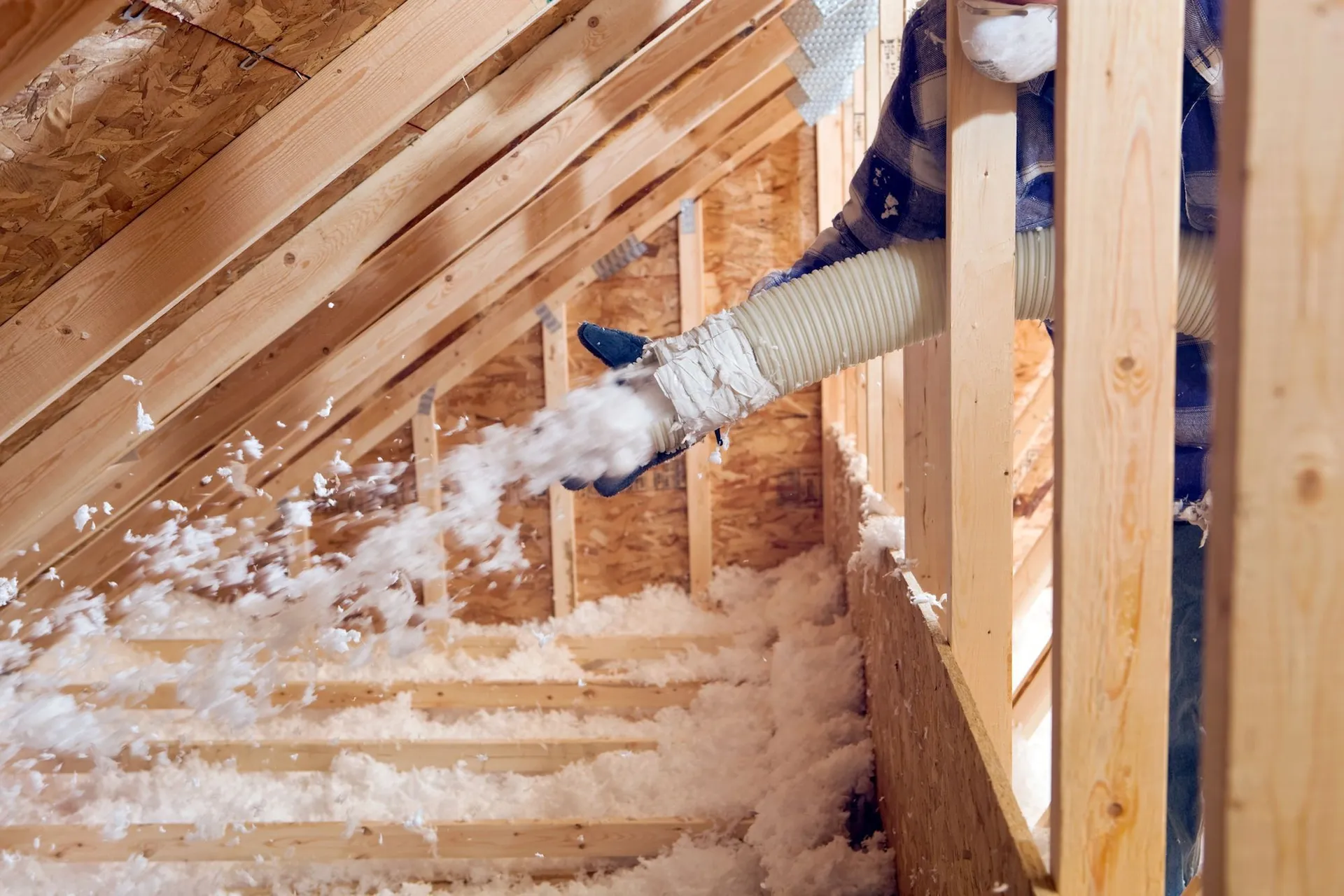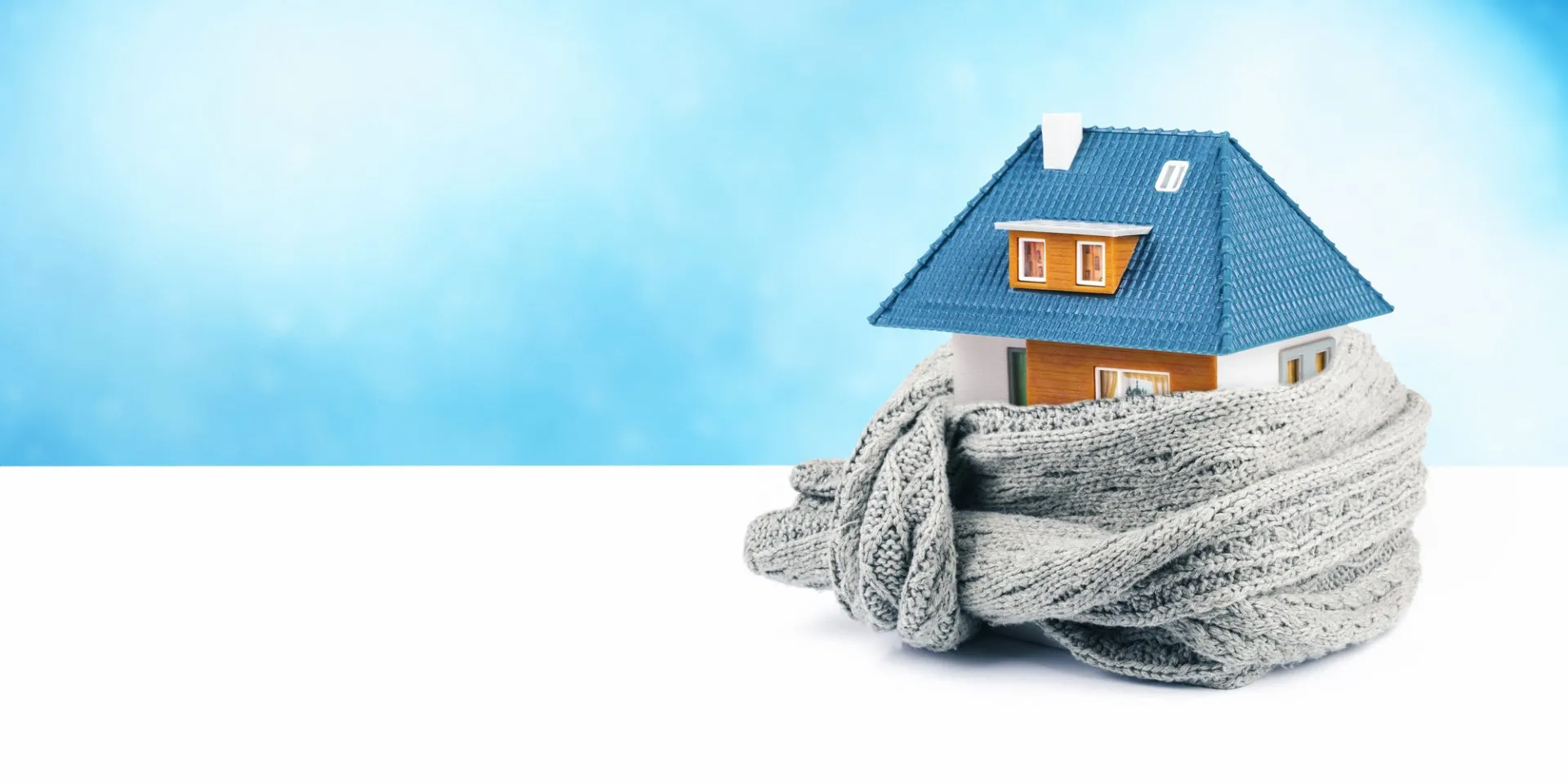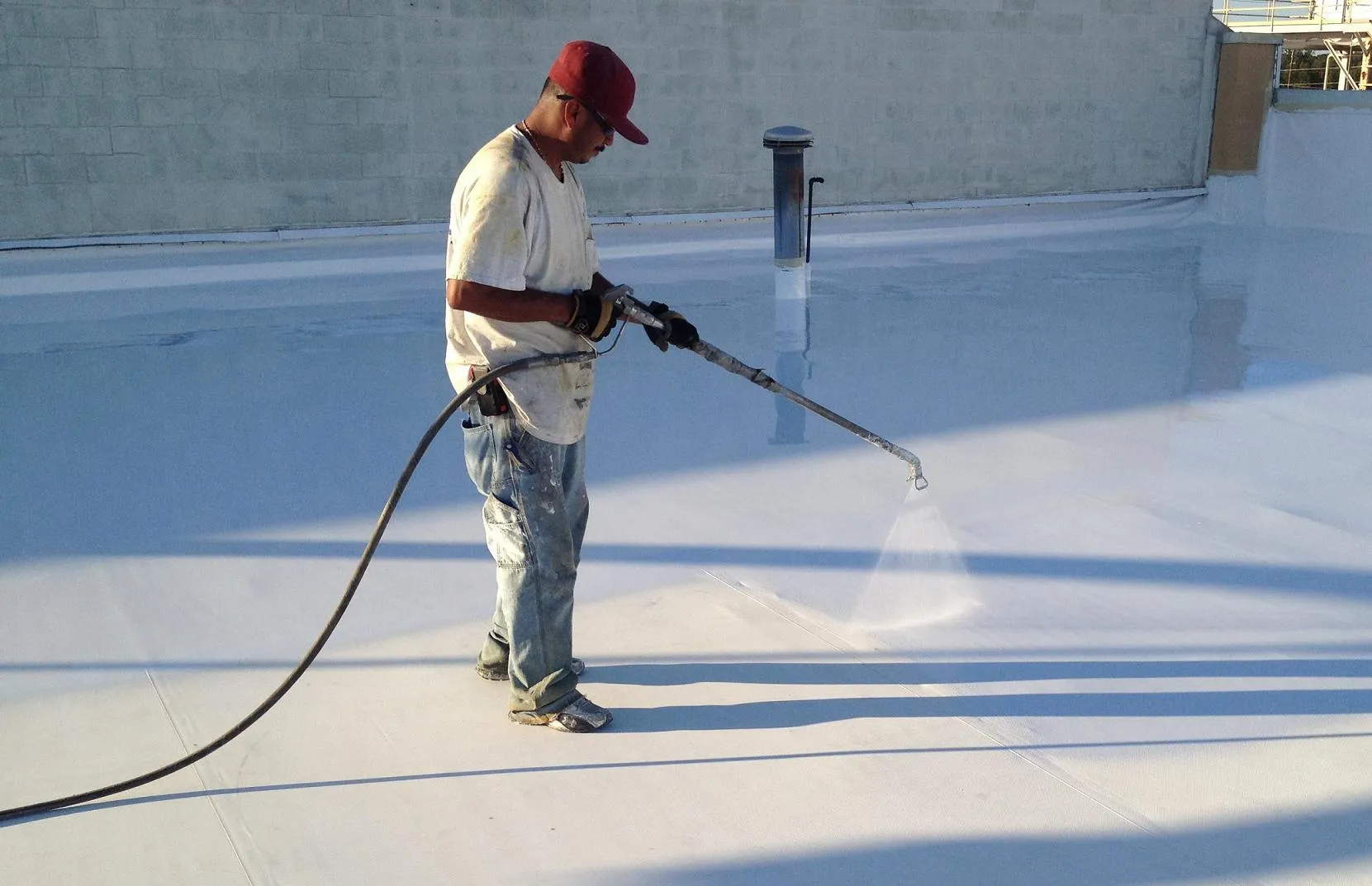The truth about cellulose insulation & fire
Why, with all the truly flammable materials found in a typical home, is the safety of the one wood-based construction product that is always manufactured to be fire retardant so frequently questioned? Possibly it is because the makers of other products find it extremely difficult to compete with cellulose on any other basis. Cellulose is simply better insulation, and, as more and more tests are demonstrating, it’s safer insulation, too.
Ever since cellulose insulation was first marketed in the 1920s sellers of competing products have raised questions about the safety of the material. These questions are based on legitimate concerns. Cellulose insulation is an organic material. (It’s made from recycled paper pulp.) Without special processing organic materials will burn.
Of course, if organic materials are automatically assumed to be fire hazards, most building materials used in the United States are hazardous, and most residential and commercial buildings are dangerous structures.
Cellulose insulation is one of the few wood based building materials that is always treated for fire retardancy and is covered by industry and government standards. Wood framing members, wood floor and roof underlayment, wood siding, wood casegoods, and many other common wood items are not usually treated for fire resistance.
Petroleum-based materials in siding, roofing, ducts, flooring, floor coverings, wall coverings, and upholstery are not usually fire resistant. Why, with all the truly flammable materials found in a typical home, is the safety of the one construction product that is always manufactured to be fire resistant so frequently questioned? Possibly it’s because other products find it difficult to compete with cellulose insulation on any other basis. Cellulose is simply better insulation.
Early investigations
The Fire Hazard Case Against Cellulose Insulation is based on a few surveys that apparently found a high incidence of non-compliance with government and industry standards in samples of cellulose insulation taken from homes. These studies were done by the U.S. Consumer Products Safety Commission in the late 1970s, and more recently by the California Bureau of Home Furnishings and by the CertainTeed Corporation, a maker of glass fiber insulation.
None of the studies have had rigorous scientific review and independent confirmation, but they do merit careful assessment. The CPSC is one organization that has made such an assessment.
Because of its findings CPSC kept close watch on the cellulose insulation issue. As more and more experience accumulated it became apparent there was no significant increase in the number of so-called “insulationrelated fires” involving cellulose.
In the fall of 1985 CPSC requested Congress to repeal the federal cellulose flammability standard. Representatives of the Commission testified that the “cellulose flammability standard was not necessary to assure the safety of cellulose insulation and should be repealed by the Congress.”
While CPSC was arriving at this conclusion David T. Darby, assistant chief with the Oklahoma City Fire Department, became concerned about the “cellulose hazard” after noticing an increase in the number of attic fires associated with home weatherization programs.
To his surprise a study of “insulationrelated fires” revealed that such fires involved mineral fiber insulation and cellulose at rates that paralleled the market shares of the materials. Cellulose, turned out to be no more hazardous than mineral fiber insulation! He looked farther and found there was a common factor in virtually all “insulation-related fires” — recessed lighting. The hazard arbitrarily attributed to cellulose insulation was equally applicable to all insulation.
These findings have been confirmed in other states. In California, where another study apparently revealed a high incidence of nonconforming cellulose insulation, a state task force studied over 2 million house fires and reported:
- There does not appear to be a significant number of fires related to any particular manufacturer’s product, and
- Heat-producing devices and electrical short circuits were major factors in insulated-related fires.
Even when a fire is classified as “insulation-related,” the insulation is seldom the first material to ignite. In the vast majority of cases a heat-producing device, such as a recessed lighting fixture, is covered by insulation. Heat builds up and is conducted through wiring or metal brackets to a wood structural member. The wood, or electrical insulation, usually ignites first.
Exploiting fear
The makers of mineral fiber insulation represent fire as a “given” hazard of cellulose insulation, in spite of the vast amount of contradictory data. In 1980 the Mineral Insulation Manufacturers Association, now known as the North American Insulation Manufacturers Association, published a “technical bulletin” based on the original CPSC study. Additional NAIMA publications with distorted fire hazard claims have appeared at regular intervals since then.
If organic materials are automatically assumed to be fire hazards, most building materials used in the United States are hazardous, and most residential and commercial buildings are dangerous structures.
One bulletin contains such unsubstantiated claims as: “nearly everyone is aware of incidents of cellulose insulation fires.” In this case NAIMA was challenged in a critical review of the document by building materials experts at Oak Ridge National Laboratory. In an article based on this review Energy Design Update, the energy conservation newsletter for the construction industry, asked editorially: “Is anyone aware of fires starting in cellulose wall insulation? For that matter, are there documented cases of cellulose insulation fires in attics? Not to our knowledge.” In another bulletin NAIMA claimed that “Independent Tests Confirm Potential Fire Hazards of Cellulose Insulation,” even though all six cellulose products tested exceeded the requirements of the only material standard that references the test method used in the study. The NAIMA tests actually proved the safety of cellulose insulation. Fiber glass interests have also commissioned surveys of fire departments that purport to show a high incidence of fires associated with cellulose insulation. In fact, these “studies” were deliberately structured to give a predetermined result. They asked fire departments if they ever had fires involving cellulose insulation. Since there are tens of millions of homes with cellulose insulation it would be unusual for a fire department not to have encountered cellulose insulation on occasion. It’s similar to asking police departments if they have ever investigated automobile accidents involving Chevrolets, then claiming that Fords are safer because every police department reported accidents with Chevrolets. CIMA had the survey instrument for one such study assessed by an independent authority who concluded: “The study indicates nothing about the relative safety of cellulose insulation in regards to other insulating materials.” Beyond this, the fiber glass interests behind these studies often falsely claimed that they were “fire marshal’s studies,” when, in fact, they were commissioned and paid for by makers of fiber glass insulation. Chemical permanency Since most cellulose insulation sold today carries the labels of credible independent testing laboratories and certification agencies, such as Underwriters Laboratories, United States Testing Company, the National Association of Home Builders Research Center, or R&D Services a new variation on the basic fire hazard story has been introduced. According to this version cellulose insulation may be safe initially, but over time the fire retardants bake out, leech out, settle out, break down, sublime, evaporate, or somehow disappear. Following an extensive literature search, the Forest Products Laboratory of the University of Claifornia at Berkeley reviewed all relevant published studies on cellulose insulation chemical permanency and concluded: “The only substantive report that indicated an aging effect is that recently reported by the California Bureau of Home Furnishings and Thermal Insulation.” CBHF said of its study: “The results are inconclusive and variable, and certainly cannot be used to condemn this material.”
Numerous other studies, including tests by scientists and technicians at Oak Ridge National Laboratory, Tennessee Technological University, Allied Signal Corp., US Borax Corp., Underwriters Laboratories, and United States Testing Company, found no sign of “disappearing fire retardants.” Most significantly, no increase in fires involving cellulose insulation has been reported, in spite the fact that every year cellulose insulation in tens of millions of homes gets older and older. What about those test failures? Even though studies do not seem to reflect a real world hazard, they should not be ignored.
“I used to think fiber glass was the thing to use, but now that I’ve seen this, as a family man, this cellulose is what I would want in my home.”
Either they indicate it’s pure luck that celluloseinsulated homes do not exhibit a higher statistical fire risk, or they suggest that the standards for cellulose insulation — standards current products routinely meet — are higher than are actually necessary to assure safety in real buildings.
Since there are millions of cellulose-insulated homes — many of them over 25 years old and some nearly 50 years old — indications are it’s more than good luck they don’t have a higher fire risk than homes insulated with other materials. How can there be so many celluloseinsulated homes, and so much reportedly nonconforming cellulose insulation with no apparent increase in the risk of fire? The answer may be in the restrictiveness of the standards that apply to cellulose insulation
The Critical Radiant Flux surface burning requirement for cellulose insulation is an example of the stringency of the standards. The minimum of 0.12 w/cm2 was established by CPSC and ASTM by comparing CRF values with the surface burning characteristics of insulation in full-scale attic assembly burn tests.
It has a 50% added safety factor.
In addition to the 50% built in safety factor, the CRF requirement for cellulose insulation has a provision that does not apply to other materials. The critical radiant flux of cellulose insulation is not determined by averaging several test runs, as is done with other materials. By the CPSC regulation and the ASTM standards, the CRF of cellulose insulation is the lowest of three test runs. In other words, if tests of a cellulose sample produced values of 0.15, 0.14, and 0.11 — a range of results that are far from uncommon with the radiant panel test instrument — the reported CRF wouldn’t be 0.13, which is comfortably passing; it would be 0.11, a failure.
Cellulose is not accorded “the benefit of the doubt” based on the variability of the test methodology. Insulation that would be found to be perfectly good if the inherent imprecision of the test method were compensated for by averaging results may be categorized as “noncomforming” on the basis of one test run. This explains why the high incidence of “nonconforming” cellulose reported by CPSC in the early 1980s — but not observed in the market today — has not equated to a greater hazard in real buildings.
What really happens outside the laboratory
Based on full scale fire tests, burn demonstrations, and actual fire data it’s possible to build a convincing case that cellulose insulation makes buildings safer.
In the so-called “Big Burn” demonstration conducted in 1978 the ceiling of the fiber glassinsulated structure collapsed 21 minutes into the burn. The ceiling of the cellulose-insulated “house” finally collapsed an hour and ten minutes after the fires were ignited. In just over two hours the fiber glass-insulated building was reduced to smoking rubble. At the three hour mark all four walls of the cellulose building were still standing and the fire had essentially burned itself out.
Similar results were observed in a demonstration burn conducted by GreenStone Industries at the Maryland Fire Training Academy in June 1998.
Cellulose-insulated structures resist fire better, because the dense fiber structure of cellulose, and its fire-retardant characteristics, slow the spread of fire into insulated walls and ceilings. Hot gasses and flames roar right through the open fiber structure of fiber glass insulation. Because of this, many knowledgeable fire officials and insurance underwriters regard properly-installed cellulose insulation as a positive fire safety factor. By slowing the spread of fire, cellulose gives occupants more time to escape and fire fighters more time to save the structure.
A fire company officer who observed the 1979 demonstration commented: “I used to think fiber glass was the thing to use, but now that I’ve seen this, as a family man, this cellulose is what I would want in my house.” A fire fighter observer of the 1998 burn said simply: “You learn something new every day.”
These comments support the conclusions of other fire fighters who have positive opinions of cellulose insulation based on their professional experience.
A Missouri fire department officer with 29 years experience noted: “I have never seen a cellulose-insulated house burn to the ground: I have seen lots of fiber glass-insulated houses burn to the ground.”
A fire fighter from Idaho commented: “Being in the construction business and in the fire service, there is no one who could convince me that fiber glass insulation is safer than cellulose in an attic.”
A Washington fire chief reported: “If it were not for cellulose in the walls and in the underfloor the house whould have been totally destroyed.”
A captain with the St. Joseph, MO, fire department said: “At the very least, if there had been people asleep in that house, the celllose insulation would have provided the extra margin of time for them to get out safely -away from smoke and flame.”
Fire resistance tests
Burn demonstrations and anecdotal evidence from real fires are dramatic and impressive, but they are not scientific assessments of fire exposure performance. There are, however, test methods that quantify the fire resistance of building assemblies. One of the most widely used and accepted fire resistance assessment procedures is the ASTM E-119 test method. This is the test used to assign fire resistance ratings — i.e., 1 hour, 2 hours, etc. — to walls and ceilings.
Cellulose-insulated assemblies tested in accordance with E-119 routinely show significantly higher fire resistance than uninsulated walls and ceilings or walls and ceilings with fiber glass insulation.
The killing blow to cellulose fire hazard claims may have come from the National Research Council Canada in 1994. After extensive tests sponsored by the cellulose industry, the mineral fiber insulation industry, the gypsum industry, and several other companies, trade associations, and government agencies NRCC reported that fiber glass slightly decreased the fire resistance of insulated walls, while cellulose produced a 22% to 55% increase in fire resistance.
In 1995 NRCC tested floor-ceiling assemblies and found that cellulose increased fire resistance more than twice as well as fiber glass. The report stated: “Glass, mineral, and cellulose fiber insulations produced an increase in the fire resistance performance of 44%, 64%, and 104%.” The lowest failure point for a fiber glass-insulated floor-ceiling assembly was 64 minutes; the lowest failure point for an assembly insulated with cellulose was 92 minutes.
In September, 1999, Omega Point Laboratories conducted full scale E-119 tests of a wall with 16 electrical boxes, half on each side of the wall. The test showed that electrical boxes can be installed in the same cavity on opposite sides of a fire-rated wall, as long as they are separated by cellulose insulation equal in thickness to the depth of the wall cavity. (In a fiber glass wall electrical boxes must be separated by a minimum of 24 inches.) The test also showed that cellulose insulation increases the fire resistance of walls up to 77% as compared with an uninsulated wall
Even the surface burning characteristics of cellulose may actually reflect favorable performance under fire conditions. The critical radiant flux test — the test most often used to brand cellulose as a fire hazard — is similar to the flame spread tests used to classify construction materials based on how far a flame front advances across the surface when it is heated and ignited.
Implicit in the logic behind such tests is the assumption that the material will keep burning until the fuel source is consumed. While this may be true with fabrics, wood-based and plastic boardstocks, and kraft-faced mineral fiber insulation batts it’s not the way cellulose behaves. Once the surface of a cellulose insulation layer is charred it no longer flames, and the charred material actually becomes a barrier against rapid combustion.
Conclusions
If organic materials are regarded as inherently unsafe most of the structural members and furnishings of virtually every home, most apartments and condominiums, and many commercial buildings are by definition unsafe. Cellulose, in fact, is arguably the safest organic building material since it is always treated with fire retardants.
Mineral fiber insulation will not burn. It’s made out of sand, rock, or slag. These are inorganic materials and they are non-combustible. Cellulose insulation is an organic material, and all organic materials are combustible to some extent. However, ascribing a fire hazard to cellulose as a “given” on the basis of this elementary fact of chemistry is a gross oversimplification of chemistry, construction, and fire science. Likewise, implying that noncombustible materials are inherently safe in a building environment is equally disingenuous.
According to Building Construction for Fire Suppression Forces, a publication of the National Fire Services Training Academy: “It is critical to recall that noncombustible does not mean ‘safe.’ And it certainly does not mean ‘fireproof.’ The concept of fire-resistance goes beyond that of noncombustibility. It refers to the capacity of a material or construction to withstand fire or give protection from it, characterized by its ability to confine a fire.”
The United States Consumer Products Safety Commission does not believe cellulose insulation is a hazardous product. Fire statistics do not support the claim that cellulose insulation is a hazardous product, and knowledgeable fire officials who have studied the matter agree. The preponderance of “real world” evidence indicates cellulose is a positive factor in residential building fire safety.
The vast majority of fire and insulation experts agree that proper installation of insulation, not the specific material used, determines the safety of the insulation system in any building.
The final word
The “cellulose as a fire hazard” story is nothing more than a negative marketing ploy by those promoting a product that apparently can’t be sold on its own merits. Cellulose insulation is an organic building material. Most materials found in homes and light commercial structures are organic and combustible. Cellulose, however, is the only common building material that is constantly characterised by competitors as a fire hazard. This is done in spite of the fact that cellulose insulation is the only building material that is always treated to be fire retardant, and in spite of demonstrably greater fire resistance of cellulose-insulated walls and ceilings.
Architects, contractors, and home owners should specify and buy insulation based on objective facts, not false fears created and perpetuated by those promoting competing materials. Cellulose is the most energy-efficient and fire-resistant insulation for residential and other light construction applications. Specifiers and buyers should not allow a fear-based negative marketing campaign to discourage them from using it.
ThermGuard Cellulose Ceiling Insultaion. . . .it’s naturally better insulation
Contact Us today for a Quotation on ThermGuard Cellulose Ceiling Insulation






